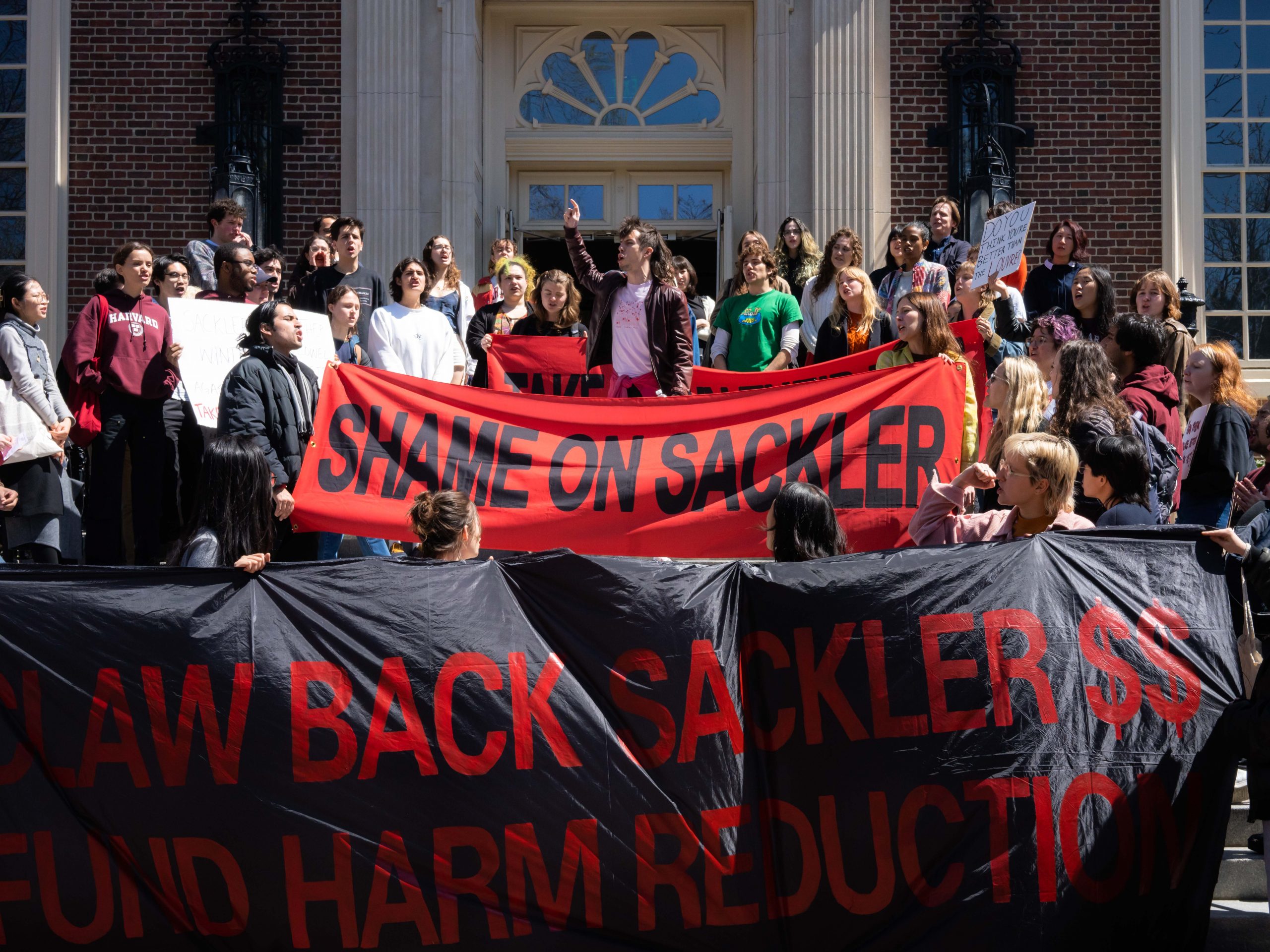
Yesterday, dozens of Harvard University students staged a protest at the campus’s Arthur M. Sackler Museum, calling on the school to remove the Sackler name from the institution over the family’s role in the opioid crisis. Students were supported by members of Nan Goldin’s activist group PAIN (Prescription Addiction Intervention Now).
Protestors tossed fake medicine vials and prescriptions in the museum’s atrium, while others brandished signs with slogans like “Shame on Sackler” and “Take Down Their Name.” Many laid down on the venue’s floor—a “die-in” meant to represent the number of lives lost to opioid addiction.
The event recalled PAIN’s previous demonstration at the museum in 2018—an early activation in the group’s now years-long quest to hold the Sacklers, whose company Purdue Pharma produced and marketed OxyContin, accountable.
Since then, prominent cultural institutions across Europe and America, including the Louvre, the Metropolitan Museum of Art, and the Serpentine Gallery, have removed the Sackler name. Tufts University in Boston, which sits minutes away from Harvard, became on the first institutions to disassociate itself from the Sacklers in 2019.
Harvard, however, has yet to follow suit, despite numerous calls from students to do so. Four years ago, University president Lawrence Bacow said it would be “inappropriate” for the school to rename its museum, since its namesake, Arthur M. Sackler, “died before the drug [Oxycontin] was developed.”
Protestors staging a “die-in” at Harvard’s Arthur M. Sackler Museum. Photo: Ben Roberts. Courtesy of PAIN.
Goldin herself wasn’t present at Thursday’s protest, though she appeared via Zoom the night before following a Harvard-sponsored screening of Laura Poitras’s Oscar-nominated documentary about the artist and her activist work, All the Beauty and Bloodshed.
In a statement shared after the event, Goldin said that “to claim that Arthur Sackler is innocent is historically inaccurate—he designed the corrupt pharmaceutical advertising scheme used by Purdue to flood America with Oxy, igniting the overdose crisis. He’s as responsible as any of the Sacklers.”
“I demand that the Sackler name be taken down,” the artist concluded.
Representatives from Harvard University did not immediately return a request for comment. A spokesperson for the school told Hyperallergic that “the university has established a process for considering de-naming spaces, programs, or other entities. A proposal to de-name the Arthur M. Sackler Museum and the Arthur M. Sackler Building has been submitted and is currently under review. ”
A press release from PAIN noted that the students behind the proposal “have yet to receive any response from the university renaming committee.”
Photo: Dumebi Malaika Menakaya. Courtesy of PAIN.
The renewed call to rename Harvard’s Sackler buildings comes amid similar student-led efforts to remove the Winthrop name from one of the school’s dormitory buildings. The name honors John Winthrop, the first governor of the Massachusetts Bay Colony and a known slave owner, as well as his great-great-grandson, also named John Winthrop, who himself enslaved two individuals while serving as acting president of the school in the mid-1700s.
At the demonstration, protesters pointed to the apparent hypocrisy of Harvard administrators taking so long to remove the Sackler and Winthrop names when they just re-christened the school’s Graduate School of Arts and Sciences after the conservative billionaire Ken Griffin, who recently donated $300 million.
“If we can name buildings after billionaires, we can de-name buildings named after slaveowners and corrupt families,” said Harvard student Clyve Lawrence in a statement shared by PAIN. “Make the process more transparent. Follow through with a set timeline. We deserve to know who is making these decisions.”